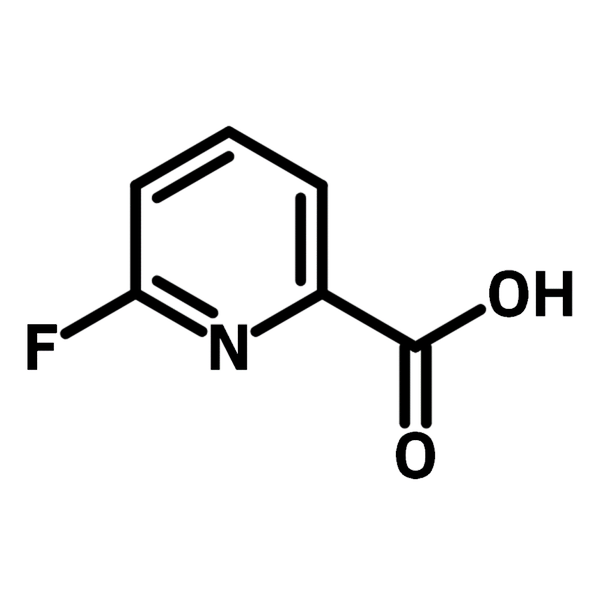Methyl 6-fluoropyridine-2-carboxylate
CAS Number 455-71-0
Chemistry Building Blocks, Fluorinated Building Blocks, Materials, MonomersA fluorinated picolinate building block
Serves as a synthesis intermediate for APIs, metal-chelating ligands and catalysts
Specifications | MSDS | Literature and Reviews
Methyl 6-fluoropyridine-2-carboxylate (CAS number 455-71-0, also known as methyl 6-fluoropicolinate, is a pyridine derivative with a methyl carboxylate at 2-position and a fluoride at 6-position. Methyl 6-fluoropyridine-2-carboxylate is readily used to functionalise molecular scaffolds for synthesising active pharmaceutical ingredients (APIs), through nucleophilic aromatic substitution on the fluoride group. A selective antagonist of BCL-XL for chronic lymphocytic leukaemia treatment is synthesised from methyl 6-fluoropyridine-2-carboxylate, showing a potency of 14 nM.
Once methyl 6-fluoropyridine-2-carboxylate is hydrolysed, it becomes a bidentate chelating agent. A Ru-fluoropyridine-2-carboxylate complex shows cytotoxicity of 27.5 µM in antitumour activity. Hydrolysed methyl 6-fluoropyridine-2-carboxylate is also employed as a ligand in palladium-catalysed C-H acetoxylation of arenes.
Multiple functional groups
For facile synthesis
Fluorinated pyridine building block
For drug discovery, medicinal chemistry and biochemistry research
Worldwide shipping
Quick and reliable shipping
High purity
>98% High purity
General Information
| CAS Number | 455-71-0 |
| Chemical Formula | C7H6FNO2 |
| Full Name | Methyl 6-fluoro-2-pyridinecarboxylate |
| Molecular Weight | 155.13 g/mol |
| Synonyms | Methyl 6-fluoropicolinate, 6-Fluoro-2-pyridinecarboxylic acid methyl ester |
| Classification / Family | Fluorinated building blocks, Pyridine building blocks, Ligands, Catalysts, APIs |
Chemical Structure

Product Details
| Purity | 98% |
| Melting Point | Tm = 51 °C – 55 °C |
| Appearance | Off-white crystals |
MSDS Documentation
 Methyl 6-fluoropyridine-2-carboxylate MSDS Sheet
Methyl 6-fluoropyridine-2-carboxylate MSDS Sheet
Literature and Reviews
- Ligand-promoted palladium-catalyzed C-H acetoxylation of simple arenes, C. Valderas et al., ChemCatChem, 8, 3213(2016); DOI: 10.1002/cctc.201600757.
- Mono- and binuclear Ru(II) arene complexes with (fluoro substituted) picolinic acid: Synthesis, characterization and cytotoxicity, S. Nikolić et al., J. Organomet. Chem., 902, 120966(2019); DOI: 10.1016/j.jorganchem.2019.120966.
- Structure-guided rescaffolding of selective antagonists of BCL-XL, ACS Med. Chem. Lett., 5, 662–667(2014); DOI: 10.1021/ml500030p.
